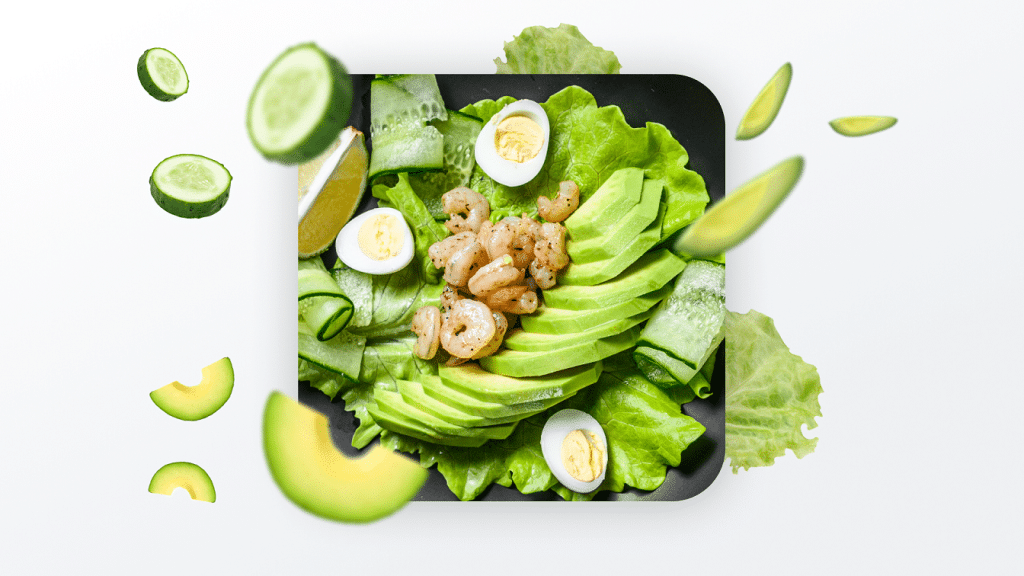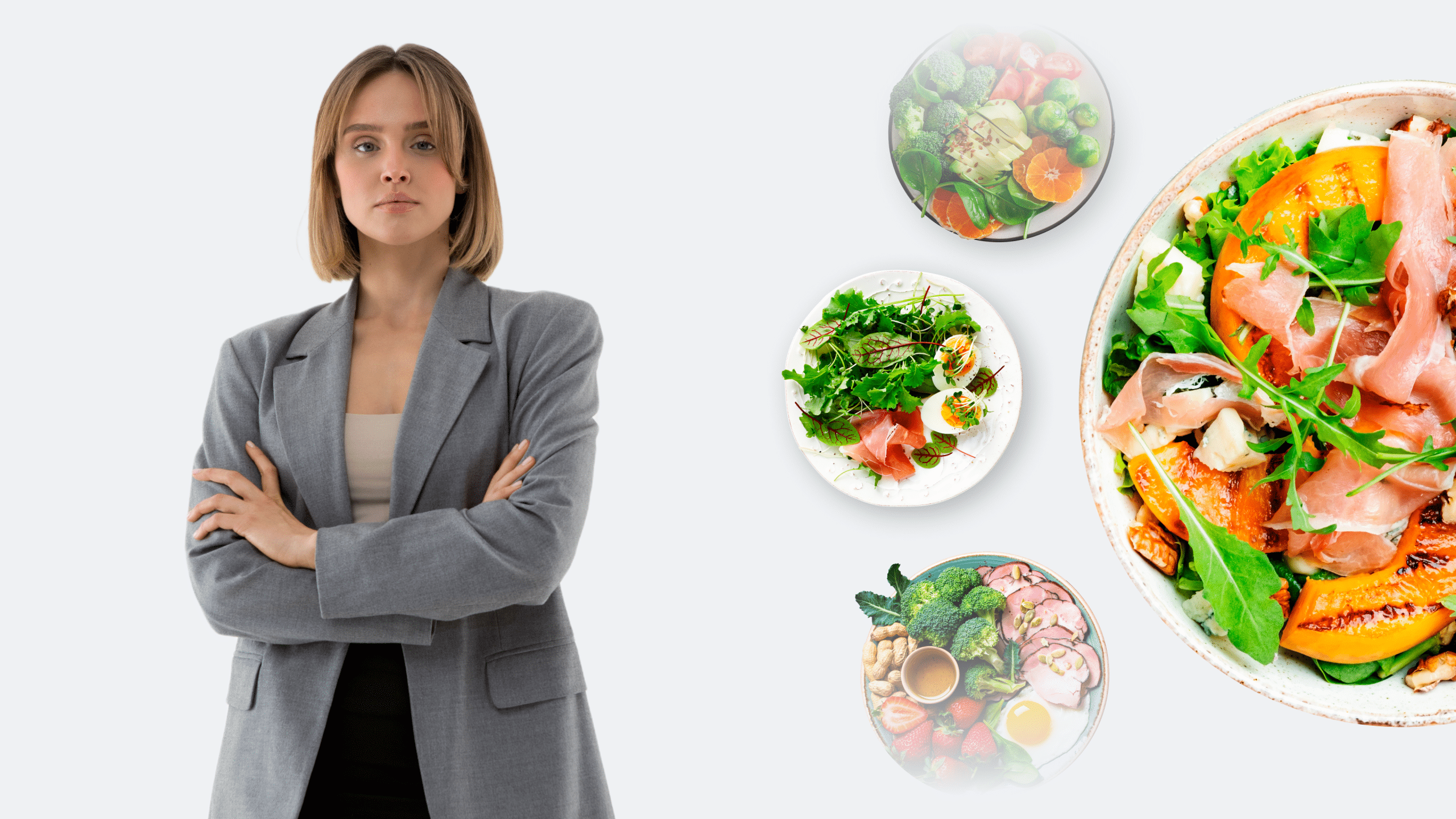There is confusion among many people about what dietary fiber actually is. Many think it’s a carbohydrate and therefore tend to avoid it in their diet since they’re trying to reduce or maintain a low-carb diet.
The truth of the matter is that although fiber is classified as a carbohydrate it has no calories and doesn’t raise blood sugar levels. It actually isn’t even digested and absorbed into the bloodstream. Rather, it has many benefits for your digestive system.
Here’s everything you need to know.
What Is Fiber?
You may be familiar with fiber’s health benefits but not realize what it is. Dietary fiber is a carbohydrate that is typically indigestible by the human body. The complex carbohydrate which comes in two types, soluble and insoluble fiber, is an important part of your daily nutrition plan mainly because it helps regulate bowel movements and keeps your digestive system working optimally (7).
Why Is Fiber Considered A Carbohydrate?
The body uses carbohydrates, which means “sugar” in Latin, as an energy source. Carbohydrates provide 4 kilocalories (kcal) of energy per gram or 17 kJ/g (13).
In contrast to fiber, other types of carbohydrates are sources of energy that raise blood sugar levels by varying degrees depending on the type; this is known as their glycemic index.
Insoluble fiber doesn’t affect your blood sugar at all and may reduce the amount of fat stored in the body. However, soluble fiber can lower blood sugar levels. It is why we say fiber is a carbohydrate but healthy for diabetics (10).
Additionally, fiber isn’t a source of calories because your body doesn’t break it down and use it for energy, instead, the indigestible fiber passes through your digestive system and out of your body without providing energy for you at all.
What Is Insoluble Fiber?
The type of fiber that doesn’t dissolve in water is called insoluble fiber. Although you can’t digest this kind of fiber, bacteria in your large intestine do have an appetite for it. As they digest it, these fecal matter-loving bacteria release gases like hydrogen and methane, and your flatulence may originate from their digestions.
In addition to helping food move through your digestive system, insoluble fiber adds bulk to your diet, helping you feel full (12). Since it can help prevent constipation and reduce cholesterol levels, adults should aim for 25 grams of dietary fiber each day (14).
Read More: Super Vegetables: Fiber And Antioxidant Bombs That Should Be On Your Plate Daily
What Is Soluble Fiber?
This is a water-soluble fiber. It may seem confusing at first that soluble fiber should be beneficial to our bowels when it turns into a liquid form, but this type of dietary fiber actually encourages solid waste elimination by slowing down the process through which foods are digested and absorbed into the bloodstream (23). Soluble fiber is also beneficial for your gut bacteria and can help you feel full for longer after eating.
When soluble fibers combine with water in the large intestine, they form a gel-like mass that stimulates peristalsis (the rhythmic contraction of muscles within the intestinal tract) resulting in stool bulkier than water alone can provide, which results in smoother more comfortable elimination (23).
Why Eat Fiber-Rich Foods?
Dietary fiber is mainly known for aiding digestion as it increases the bulk of food in your digestive system, which makes the job easier for your body and reduces constipation. However, the complex carbohydrate has several other benefits.
Weight Loss And Healthy Weight Maintenance
Did you know that eating a high-fiber diet can help you lose weight or maintain a healthy weight? Fiber reduces hunger feelings and makes you feel satisfied after eating. The soluble fibers in foods also help fill up your stomach so you eat fewer calories overall (23). This may lead to weight loss if one exercises regularly because of this increased feeling of fullness with every meal.
When it comes to losing extra pounds, increasing your dietary intake of fiber will not only make it easier to stick to a diet, it will also provide long-term benefits for keeping the weight off in the future.
Blood Sugar Control And Diabetes Prevention
Consuming a diet rich in fiber not only just helps improve your digestive system, but also helps with blood sugar control by slowing down how quickly food passes through the stomach and into the intestines.
The soluble fibers have a particularly beneficial effect on insulin sensitivity, which means that they help reduce inflammation of the cells throughout your body while helping regulate blood sugar levels (23). This just proves that high-fiber diets are effective for preventing diabetes mellitus and other pre-diabetic conditions as well!
Reasons why BetterMe is a safe bet: a wide range of calorie-blasting workouts, finger-licking recipes, 24/7 support, challenges that’ll keep you on your best game, and that just scratches the surface! Start using our app and watch the magic happen.
Good Cholesterol And Blood Pressure Levels
Because dietary fiber increases feelings of fullness, it’s a natural way to increase satiety without having to count calories or limit volume. It’s also effective for improving your cholesterol and blood pressure levels because the soluble fibers help prevent LDL (bad) cholesterol from oxidizing in the bloodstream, which in turn reduce your risk of a heart attack or stroke later on down the line (23).
Cancer Prevention
Because fiber helps improve bowel health, it helps prevent colorectal cancer, as well as other conditions such as diverticulitis and hemorrhoids.
Fiber can also bind itself to other compounds in foods, such as toxins and carcinogens that are present in meat products, thus removing them from entering the bloodstream before they have a chance to cause damage (8).
The soluble fibers in foods can also bind with bile acids that are produced by the liver, which will help prevent them from forming into cancer-causing compounds before they have a chance to be absorbed (8).
How Much Fiber Should You Eat Per Day?
Unfortunately, most people don’t get enough fiber in their diet. While most people should get at least 25g of fiber per day, the average American only gets about half that (5).
According to the Institute of Medicine (IOM) Committee, “adults should consume 14 grams of dietary fiber for every 1000 calories”. In other words, multiply your calorie intake by 14 and that’s how many grams of fiber you need (9). For instance, if you consume 2000 calories a day then multiply 2000 x 14 = 28g of fiber.
This is all well and good if you know what your daily caloric needs are. However, you can also take a more general approach and only focus on how much fiber you should be eating per day based on your age and gender.
On average, American adults eat 10 to 15 grams of total fiber per day, while the USDA’s recommended daily amount for adults up to age 50 is 25 grams for women and 38 grams for men. Women and men older than 50 should have 21 and 30 daily grams, respectively (15).
The daily fiber intake recommendations may seem high but if you eat a “high-fiber” diet, then these amounts of fiber will be easy to reach. Just have a balanced diet with lots of fruits and vegetables along with some grains.
Read More: High-Fiber Diet: What To Eat To Ensure A Smooth-Running Digestion?
Which Foods Are Naturally High In Fiber?
Pears (3.1 grams)
The pear is a popular fruit that’s both tasty and nutritious. It’s one of the best fruit sources of fiber.
Fiber Content: 5.5 grams in a medium-sized raw pear or 3.1 grams per 100 grams (18)
Strawberries (2 grams)
Strawberries are a delicious, healthy option that can be eaten fresh.
Interestingly, they’re also among the most nutrient-dense fruits you can eat. Boasting loads of vitamin C, manganese, and various powerful antioxidants. Try some in this banana strawberry smoothie.
Fiber Content: 3 grams in 1 cup of fresh strawberries or 2 grams per 100 grams (22)
Avocado (7 grams)
Avocados are not only tasty and versatile but also quite healthy. They’re high in fiber, potassium, vitamins B6 and E, and various phytochemicals which may protect against cancer.
Fiber Content: 13 grams in 1 avocado, or 7 grams per 100 grams (2)
Pineapple (1.4 grams)
The pineapple is a tropical delight that’s a popular dessert ingredient but can be enjoyed fresh as well. It’s loaded with vitamin C and bromelain, an enzyme with anti-inflammatory properties that can help you digest food better.
Fiber Content: 2.3 grams in 1 cup of pineapple chunks, or 1.4 grams per 100 grams (19)
Raspberries (7 grams)
Raspberries are highly nutritious with a very strong flavor. They’re loaded with vitamin C and manganese. Try blending some into a raspberry tarragon dressing.
Fiber Content: 8 grams in one cup or 7 grams per 100 grams (21)
Beets (3 grams)
Beets are not just for pickling or turning into a bright red juice. They’re also delicious when eaten fresh, although they can impart an earthy flavor to your food if not cooked properly. Beet greens are equally healthy, offering heavy doses of vitamins A and C as well as calcium and iron (3).
Fiber Content: 3.4 grams in one cup of diced beets or 3 grams per 100 grams (3)
Artichoke Hearts (7 grams)
Some people think artichokes are among the most nutritious vegetables out there and that may indeed be true if you eat the leaves or whole plant instead of just the heart. The heart itself is still a good choice, offering a healthy dose of fiber and various antioxidants.
Fiber Content: 7 grams per cup of cooked artichoke hearts (1)
BetterMe app will provide you with a host of fat-frying fitness routines that’ll scare the extra pounds away and turn your body into a masterpiece! Get your life moving in the right direction with BetterMe!
Okra (3.2 grams)
Okra is sometimes called “lady fingers” because its leaves look somewhat like little hands, and it can be prepared as a vegetable side dish in many different ways. That said, the pods themselves are also edible and pack quite a few nutrients.
Fiber Content: 3.2 grams per 100 grams of whole okra pods (17)
Oats (8 grams)
Oats are a superfood full of fiber, which is one reason why they’ve been used for decades to help maintain digestive health and prevent constipation.
Fiber Content: 100-gram serving offers 3 grams of fiber; ½ cup (40 grams) has about 8 grams (16)
Cranberries (6 grams)
Cranberries, another magical fruit that tastes great with your Thanksgiving turkey, are loaded with powerful antioxidants like quercetin as well as manganese, vitamin C, and various flavonoids which have anti-inflammatory effects. They also contain ample amounts of fiber (5).
Fiber Content: 12 grams in one cup of whole cranberries or 6 grams per 100 grams (6)
Grapefruit (1.6 grams)
People often toss the white part of a grapefruit aside because it’s bitter tasting and not very appealing to look at, even though it’s also packed with vitamin C, lutein, and zeaxanthin. Enjoying your grapefruit with its peel still attached is far from inconvenient since you can just eat the rest of it along with the fruit
Fiber Content: 6.3 grams of fiber per 100-gram serving (about half a medium-size fruit) (12)
Broccoli (2.6 grams)
The broccoli is an often overlooked vegetable but it’s certainly underrated as it provides a wealth of nutrients including vitamin C (23% RDA), vitamin K1, carotenoids like zeaxanthin, and lutein which promote eye health, as well as fiber, folate, choline, and vitamin B6.
Fiber Content: 2 grams in one head of broccoli or 2.6 grams per 100 grams (4)
Pine Nuts (3.7 grams)
These tasty little seeds are a classic Italian ingredient that often shows up in pesto and other savory dishes. They’re high in fiber, protein, vitamin K1, and manganese, as well as various phytochemicals with an antioxidant activity that supports overall health.
Fiber Content: 5 grams per cup or 3.7 grams per 100-gram serving (20)
The Bottom Line
Fiber is a complex carbohydrate and there is a difference between soluble and insoluble fiber. The benefits of eating a fiber-rich diet include better digestion, weight management, and disease prevention. A good rule of thumb for getting more fiber in your diet is to eat plenty of fruits and vegetables as well as whole grains like oats or brown rice to get the proper balance of both soluble and insoluble fibers.
DISCLAIMER:
This article is intended for general informational purposes only and does not address individual circumstances. It is not a substitute for professional advice or help and should not be relied on to make decisions of any kind. Any action you take upon the information presented in this article is strictly at your own risk and responsibility!
SOURCES:
- Artichokes, NS as to form, cooked (2020, usda.gv)
- Avocado, raw (2020, usda.gov)
- Beets, raw (2020, usda.gov)
- Broccoli, raw (2020, usda.gov)
- Closing America’s Fiber Intake Gap (2016, nih.gov)
- Cranberries, raw (2020, usda.gov)
- Dietary fiber: Essential for a healthy diet (2021, mayoclinic.org)
- Dietary fibre, whole grains, and risk colorectal cancer: systematic review and dose-response meta-analysis of prospective studies (2011, bmj.com)
- Dietary Reference Intakes For Energy, Carbohydrate, Fiber, Fatty Acids, Cholesterol, Protein, and Amino Acids (2002, nationalacademies.org)
- Effects of dietary fiber and carbohydrate on glucose and lipoprotein metabolism in diabetic patients (1991, pubmed.gov)
- Fiber (harvard.edu)
- Grapefruit, raw (2020, usda.gov)
- How many calories are in one gram of fat, carbohydrate, or protein? (n.d., usda.gov)
- Increasing Fiber Intake (n.d., ucsfhealth.org)
- Nutrient Intake from Food (2010, usda.gov)
- Oats, raw (2020, usda.gov)
- Okra, raw (2020, usda.gov)
- Pear, raw (2020, usda.gov)
- Pineapple, raw (2020, usda.gov)
- Pine nuts (2020, usda.gov)
- Raspberries, raw (2020, usda.gov)
- Strawberries, raw (2020, usda.gov)
- What’s the Difference Between Soluble and Insoluble Fiber (2021, clevelandclinic.org)



















